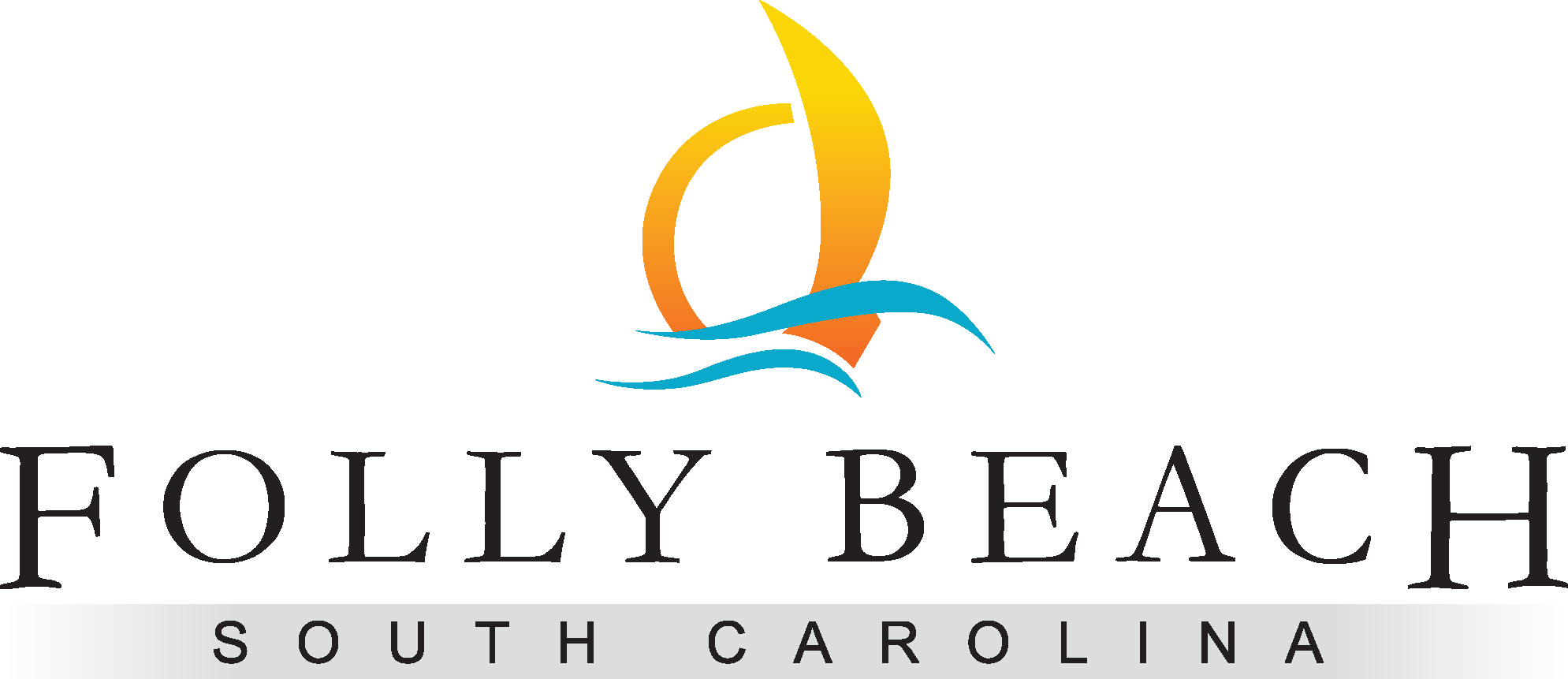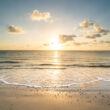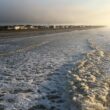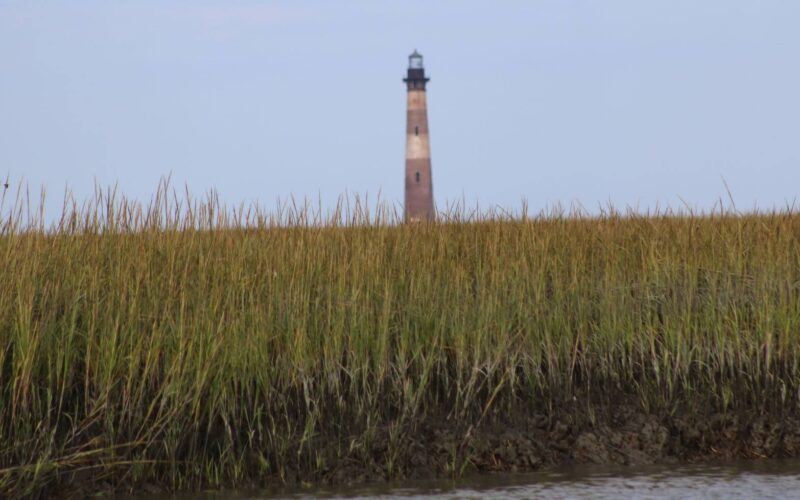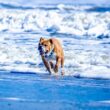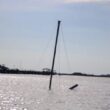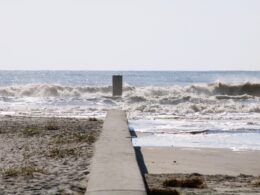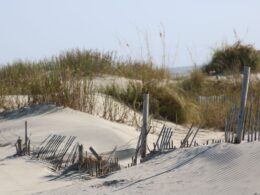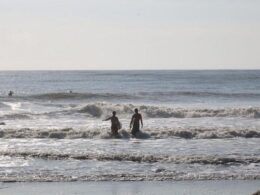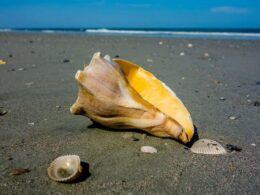If you’ve spent any time near Folly Beach, you’ve likely smelled it, stepped in it — maybe even gotten stuck in it. Some folks have even gone so far as to smear it on their face or body for fun (or photos). If you’ve done any of these things, congratulations — you’re officially a pluff-mudder.
This dark, sticky, and aromatic substance is everywhere in the salt marshes that surround Folly Beach and the South Carolina coast. It’s where oysters grow, where fiddler crabs scurry, and where the famous spartina grass waves gently in the breeze. And yes — it’s the same stuff that can suck the boots right off your feet.
But what exactly is pluff mud?
The Science Behind the Squish
Some call it pluff, others plough, but whatever your pronunciation, this unique coastal mud is a natural masterpiece that took thousands of years to form.
Pluff mud is made of fine sands, silts, clays, and organic material — a rich mixture that slowly flows down from the Appalachian Mountains, carried by rivers and streams all the way to the Lowcountry coast.
When these sediments reach the ocean, waves, tides, and wind sort them out. The heaviest sands stay near the beaches, while the finer particles settle in calmer waters — in the quiet, low-energy zone behind the barrier islands known as the back barrier.
Over time, regular tides bring in more mud and nutrients. Once the surface builds up high enough — around the average high tide line — the first blades of spartina alterniflora, or salt marsh grass, begin to take root. This is how a salt marsh is born.
You can actually see this process in action near Folly’s tidal creeks or along the road to Morris Island Lighthouse — it’s nature’s slow-motion construction project.
Why Pluff Mud Matters
The pluff mud may look messy, but it’s a vital part of the Lowcountry ecosystem. It’s home to an incredible amount of life — crabs, shrimp, oysters, clams, and even small fish use it as shelter, breeding grounds, and food sources. Birds and mammals feed on what lives in it, making the marsh one of the most productive habitats on Earth.
Every casual explorer on a Salt Marsh Adventure can spot this thriving world firsthand: fiddler crabs waving their oversized claws, herons stalking their prey, and oysters forming the base of entire reef systems.
Pluff mud’s organic fraction — the decomposed remains of plants and animals — is what gives it that unmistakable sulfur-rich smell. So the next time you enjoy an oyster roast, remember that the same marsh mud that stains your boots also nourishes the seafood on your plate. (And if you’re shucking your own, give them a rinse first — a little less mud makes a better roast. For local tips, check out our Perfecting the Oyster Roast guide.)
Walking (or Trying to) on Pluff Mud
Visitors often ask, “Can I walk on that?”
Technically, yes — but you’ll only do it once.
Step into pluff mud, and you’ll sink to your calves almost instantly. Struggle to move, and you’ll likely end up to your knees or thighs. Many a boot has been lost to the marsh, sacrificed to the sticky depths of Lowcountry legend.
During winter oyster season, wading into pluff mud is sometimes unavoidable, especially for locals harvesting oysters by hand. Just remember one golden rule: wear tight-fitting boots. Anything loose will be claimed by the mud gods before the day is done.
The Rhythm of the Marsh
The pluff mud’s appearance and consistency change constantly with the tides, weather, and seasons. High tide floods the marsh twice a day, bringing fresh nutrients and water. Low tide exposes vast expanses of soft mud — shimmering, fragrant, and alive.
If you’re timing your visit for a marsh walk or photo session, check the Folly Beach tide chart before heading out. Mornings at low tide are perfect for spotting fiddler crabs and wading birds hunting in the shallows.
Want to catch that golden glow over the spartina? The Folly Beach weather forecast can help you plan for those pink-sky sunsets that turn the marsh into a living painting.
A Living Symbol of the Lowcountry
Pluff mud is more than just muck — it’s the foundation of life in the Lowcountry. It filters water, anchors grasses, shelters wildlife, and sustains our seafood industry. It’s in our art, our stories, even our sense of humor.
You’ll smell it before you see it, and you’ll remember it long after you’ve left.
It’s part of what makes Folly Beach — and the South Carolina coast — unlike anywhere else in the world.
So go ahead, step carefully, breathe it in, and give thanks for the pluff.
It’s messy, it’s magical, and it’s part of who we are here on the Edge of America.
